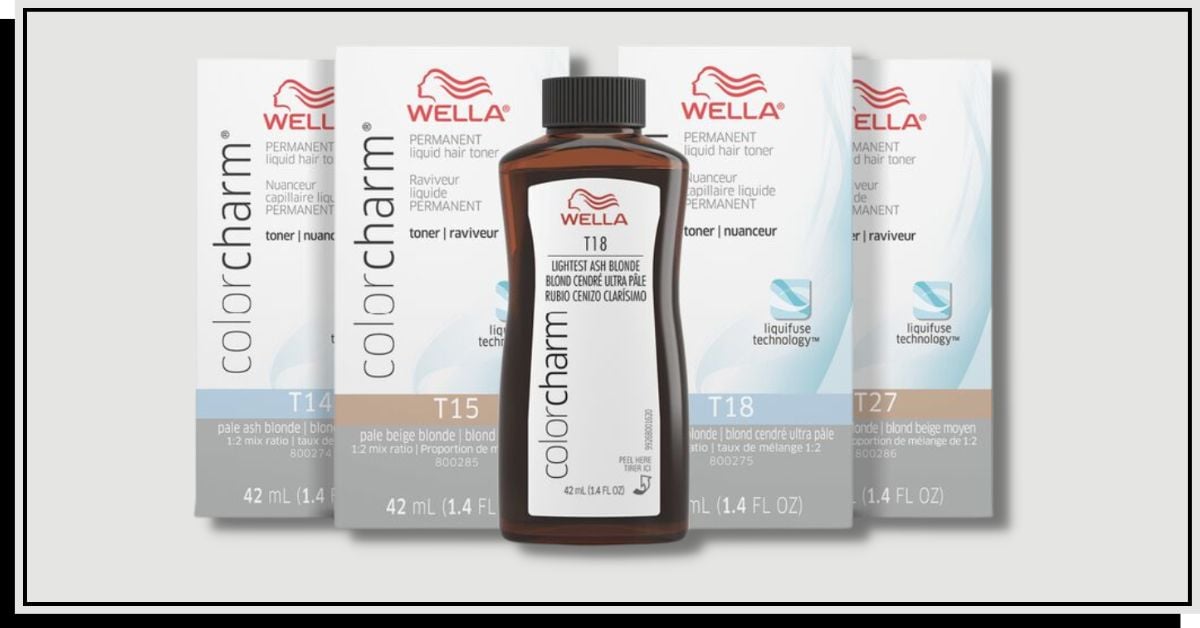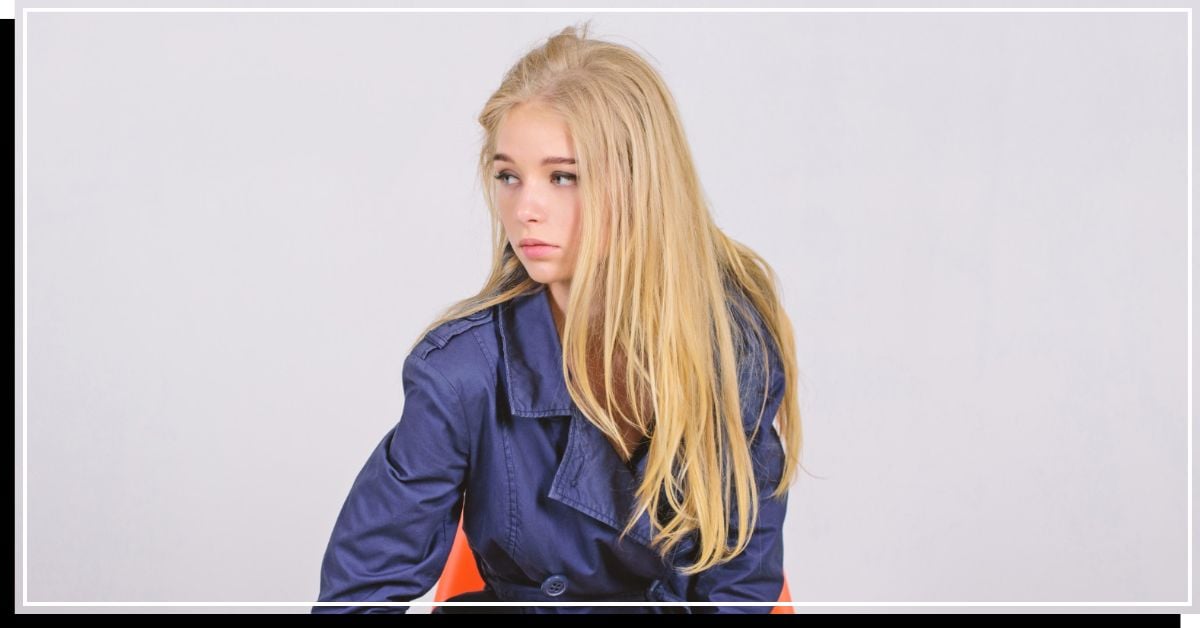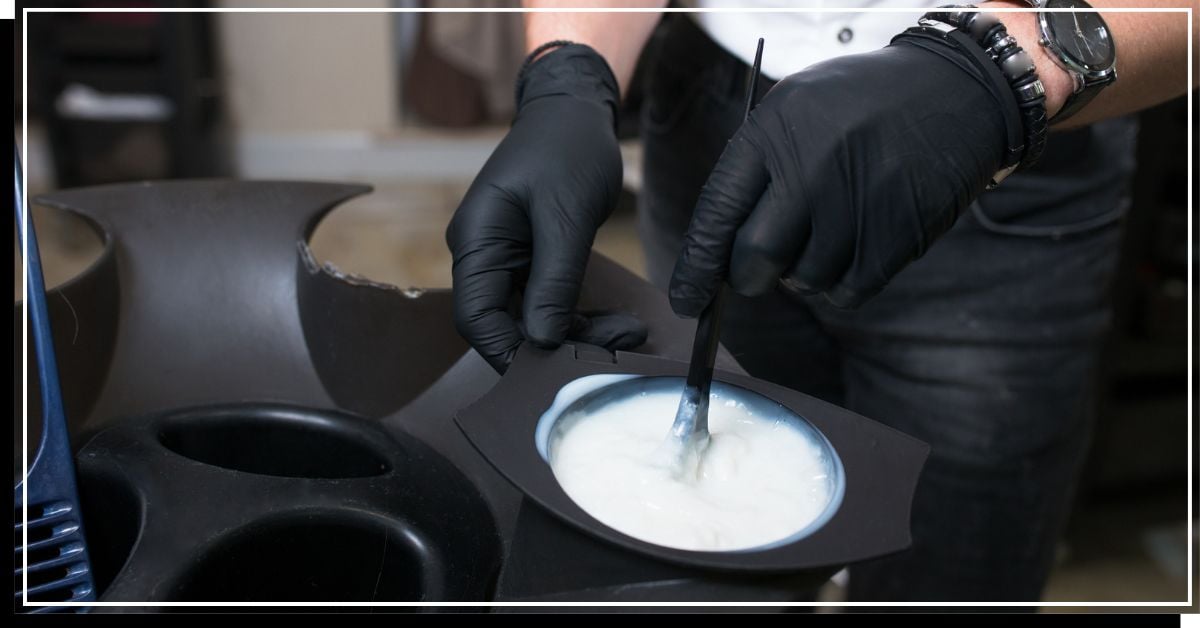Reader question:
I’m always looking to keep my hair color vibrant without overdoing it. So, how long would you recommend leaving a toner in to refresh my highlights without risking damage? I want to ensure I get that perfect balance of tone, especially since my schedule’s packed and I can’t afford a slip-up. Is there a sweet spot for timing that works for most?
Jasmine Reese
Saint Petersburg, FL
Hello Jasmine,
Anytime you dye your hair, I’m sure you want your results to look identical to the image you’ve had in your head.
No matter the shade, issues like brassiness and yellow-orange tints are frustrating. And that’s where the star of the show comes in: Hair toner.
How long to leave in toner for different hair types:
- Bleached or pre-lightened hair with high porosity: should be checked in 2-minute increments and toner should not be left longer than 7 minutes.
- Natural blondes with no prior bleaching: toner should be left no longer than 20 minutes for a vibrant or deep tone.
- Curly hair, due to high porosity: tone shoulder be left for a maximum of 10 minutes.
- Brunettes with pre-lightened hair: toner should be left in 5-minute increments, not exceeding 15 minutes for dimensional color.
- Brunettes with no prior lightening: toner should be left for 20 minutes after inspecting the hair’s porosity.
- Natural redheads: have low porosity, requiring toners with more opaque color molecules to be applied for a full 20 minutes.
- Fine hair: may be more porous and hence take color darker; use a level higher formulation and toner should be left in for at least 15 minutes.
Hair toner is a simple product, but using it correctly can take your dye job from, “Oh … you dyed your hair” to “Oh my gosh! … You dyed your hair!”
Basic tips for hair toning:
- Understand your expectations. Vivid or vibrant tones may require a longer processing time than natural or translucent tones
- The hair’s porosity also affects this, with high porosity hair requiring a shorter processing time and low porosity hair needing longer.
- Use of a plastic cap or hooded dryer could help in the easy opening of the hair cuticle.
I spoke with Mona Lee Wilson, hairstylist and co-founder of Prisma Hair Co in Albuquerque, NM, about her best tips for using toner. She told me, “Understanding the limitations of toner is key!
You can absolutely use toners to your advantage to help even out uneven lifting. However, it’s important to remember a toner will not make your hair blonder or lighter. Using proper bleaching applications and lifting techniques is the only way one can achieve a lighter end result.”
Basically, toner isn’t a miracle product. But it has great effects when used the right way! Up ahead, I’ll be discussing the role of toner and how to use it for ideal results. But first, check out our beauty influencers’ favorite products.
What Is Hair Toner?

Toner is typically the final step in lightening hair services, this isn’t always necessary in all hair color services however this is a great way to enhance the tone or get rid of any unwanted ones.
Toner can be a critical step in the coloring and highlighting process. Its main purpose is to rid the hair of unwanted tones or enhance specific ones.
Toner can be a tricky tool to use, however understanding your product line is key. Keeping in mind the client’s porosity can have a more successful outcome of toning, therefore, leaving your blondes bright and avoiding overtoning.
The 3 Types of Hair Toner
There are 3 different types of hair toners. Below, I’ll outline their key differences and explain who each one is most appropriate for.
Permanent
A permanent hair toner is great if you’re working with darker levels or corrective work. Permanent toners tend to have a longer lifespan however, it’s important to know when it’s appropriate to use them. Since permanent toners still have either ammonia or MEA (replacement for ammonia) this can be a tricky tool to use, if used incorrectly this can lead to hair damage.
Permanent hair toner is best if your hair is healthy and needs to correct a tone. Permanent toner can also be layered with and used in conjunction with demi or semi permanent hair color to achieve desired results.
Demi-Permanent
Between permanent and semi-permanent is demi-permanent toner. This hair toner usually has an ammonia base, which means it can penetrate the cuticle layer of your hair. The cuticle is the clear, protective layer around every hair strand. (Source) Certain chemicals, like ammonia, can penetrate it to help color deposit.
This will result in a significant color deposit. This type of toner will typically last between 20-25 washes, with an appropriate hair care routine.
Semi-Permanent
Semi-permanent toners achieve the least dramatic results, but they are still effective. They’re a bit more forgiving and easier to use, so most people who dye their hair at home choose to use this type of toner. It’s also ideal if you have especially fine or delicate hair.
If you’ve seen purple and blue shampoos for sale, these are examples of semi-permanent toners. They’re a gentle way to maintain hair color and avoid brassiness between touch-ups.
When Should a Toner Be Used?

Toner is typically applied after a bleaching process. Most professional hair stylists will apply toner on wet or dry hair depending on the porosity and desired results. Always refer to the manufacturer’s instructions when performing chemical services at home.
It’s best to apply toner right after hair dye or bleach because your cuticle layer will still be open. That means the toner can deposit deeper into your hair shaft. This provides longer-lasting results!
Toner is a great tool when the hair is in a raw lift state. However, if your hair has lifted to the appropriate shade of blonde it’s not always necessary.
Hair Type Considerations
Typically, you should plan on toning your hair right after any lightening application. But if you have fine hair, heavily processed, or extremely porous hair, you may need to take special steps when toning.
Fine Hair

If you have fine, delicate hair you may need to use a more gentle method of toning. Consider using semi or demi-permanent hair color instead of a permanent option.
But how do you know if your hair is fine?
Well, your individual hairs have a smaller diameter compared to medium or thick hair. Pinch one hair between your thumb and forefinger near your scalp. Now, run your fingers down that strand of hair.
If you can feel a “bumpy” or “rigid” texture, you have a coarse hair strand. If you have a “smooth” or “soft” texture, this may be a sign of fine hair types.
Note that fine hair is not the same as thin hair. With thin hair, you have a lower number of individual hairs in general. But those hairs may be coarse, medium, or fine.
With fine hair, the risk of over-processing is high. Using a higher developer in the bleaching process can do irreversible damage so it’s important to be cautious with the processing time and level of the developer being used.
The best thing you can do to prep your hair before any lightening services is to do hair masks and treatments leading up to it. It’s equally important to continue treatments after.
My personal favorite is Davines Replumping Conditioner. This conditioner is great because it nourishes your hair while adding volume and movement. It’s the best of both worlds!
If you aren’t using any products to strengthen your hair, you may need to wait a few days after dyeing/bleaching before you can safely tone.
Heavily Processed or Extremely Porous Hair

The other exception to immediate toner is waiting in between chemical services. However, it’s still important to bring your hair’s natural PH levels back down to 4.5-5.5. The best way to do this is to apply an acidic-based conditioner or let your hair’s natural oils coat your hair.
So, how do you know if your hair is damaged enough to warrant waiting to apply toner?
Severely damaged hair tends to be:
- Dull
- Dry
- Brittle
- Fuzzy or frizzy
- Gummy or sticky-feeling
- Tangled
- Thinned out (thick at roots and thinner near the ends)
- Shedding
If you’re experiencing hair damage its important to be gentle and patient in between chemical services. More time in between services is always best for optimum results.
It’s also important to work on improving your hair’s quality in the meantime. Using special products that are specifically designed to revive processed, damaged hair can help.
I recommend using Olaplex Hair Repair Treatment Kit 2 to 3 times before toning your hair. These products are highly effective at helping your hair repair itself and being able to absorb toner more properly and evenly without causing damage.
How Long to Leave Toner in Hair: Best Tips for Success

When it comes to how long a toner should process it comes down to the type of toner you are using and the canvas you’re working on. Ultimately this makes a single answer too difficult with too many factors to consider.
I asked Mona to explain why toning at home can be so hard. She said, “When you’re lightening hair at home, you often do not have all the right products to achieve proper color.
The top reason you find problems is if you have previously colored hair. Your hair will not lift all the same. So, you often need to mix two different bleaches, use multiple toners, and apply them on different areas of the hair shaft.
Simply put, you don’t know what you will lift for toning. But people often buy everything at once and expect everything to go perfectly. As we know from TikTok videos, that is not the case.”
That said, experts like Mona and myself leave most hair toners in for 5 to 20 minutes. The exact timing depends on the following:
- Your current hair color
- Your hair’s current health
- Your natural hair type (fine vs. coarse)
- What your desired hair color is
- What type of hair toner you plan to use (permanent, demi-permanent, or semi-permanent)
And you should know that toner will damage hair if left in too long. Remember to never leave toner in your hair for longer than 45 minutes. Doing so may risk your hair turning dull and ashy and can cause significant damage to your tresses as well.
You’ll also need to consider where on your hair you plan on using toner. That’s because it can be used as a spot treatment for specific areas or all over if all of your hair needs toning.
With all this in mind, let’s go over my top 3 rules for determining the ideal length of toning time for your hair.
1. Consider Your Hair Color and Level
The most important thing to think about in terms of how long to leave hair toner in is the current color of your hair.
If you’re dealing with bright orange tones, for example, your toner will need to sit for a bit. But if you have the slightest hint of yellow, you can get away with a shorter processing time.
I asked Mona to shed some light on the importance of the color wheel while toning your hair. She told me, “The color wheel is the only way to properly formulate and tone hair. It’s important to understand what colors are complementary and what colors “cancel out” or neutralize each other. The color wheel is crucial in understanding color theory and choosing toners.
For example, green cancels out red, blue cancels out orange, and violet cancels out yellow, so in order to achieve the proper blonde, it’s important to establish what warm tones are present.”
One easy way to do this is by pulling up a color wheel online. Look at which colors are opposite one another. For example, purple is the opposite of yellow. If your hair is looking more yellow than you’d like, a purple toner will give you that true neutral blonde.
2. Assess Your Hair’s Health
Depending on how you care for your hair, it may be at different stages of health at any given time. If you often bleach or dye your hair, quite a bit of damage may be present.
When it comes to how long you should use hair toner, err on the side of caution if your hair is somewhat damaged. Five to ten minutes is a good place to start.
If you’re dealing with extreme damage and breakage, it’s better not to tone right away. Instead, do a deep conditioning treatment after dying or bleaching. Then give your hair 3-7 days before toning.
Another potential issue if you have this much damage is porosity. Your hair is so dry that it’s like a sponge, begging for moisture. It’s common for this hair type to suck up too much pigment from your toner and turn purple, for example. Be very careful if your hair is in this state, or visit a salon for toning.
3. Always Read the Instructions
Always pay attention to the instructions on your hair toner’s packaging and the manufacturer’s recommendations. While this may sound obvious, some people forget that the instructions are there for a reason.
These instructions often include the appropriate developer to use and the recommended length of time.
I know it’s easy to find videos of people getting great results without following these. But it isn’t worth risking your hair’s health! It’s just as easy to find videos of people melting their hair with improper toning.
Don’t take the risk!
Frequently Asked Questions
Do you apply toner to wet or dry hair?
Toners can be applied on wet, damp, or dry hair. For the least amount of pigment deposited, wet hair is ideal. For a medium amount of deposit, damp hair is ideal. For optimum pigment deposit, dry hair is the best way.
Should you wash your hair after toner?
Yes, you should wash your hair after using toner. You’ll want to shampoo away any excess product to stop the processing of the toner. That said, avoid deep-cleaning options like clarifying shampoos. The goal is to wash away the excess product, but not the color it imparts.
Why is my hair still brassy after toning?
Your hair can be brassy after using toner when you use the wrong shade or level of lightness. You have 2 options in this scenario. Either reevaluate your hair and buy a different toner or get professional help at a salon.
But remember, you may need to tone several times before you get the right level and shade. This can be expensive and damaging to your hair.
Can hair toner be used on natural hair?
Yes, you can use hair toner on natural hair. This is sometimes done to remove unwanted color tones from hair color, water mineral build up or chemicals. That said, toners don’t do much to dark hair. You’ll need to be a natural blonde to see much of an impact.
How soon after toning my hair can I tone it again?
You’ll want to wait between 2 and 4 weeks before you tone your hair again. Toners can cause hair damage and breakage. Waiting ensures your hair stays healthy and doesn’t suffer unnecessary damage.
What happens if you leave toner in too long?
Leaving toner in your hair too long can deposit too much color and/or damage your hair. This is especially true if your toner contains ammonia. (Source) Remember, you can always apply a second round of toner. So, it’s always better to err on the side of caution and risk rinsing too soon versus too late.